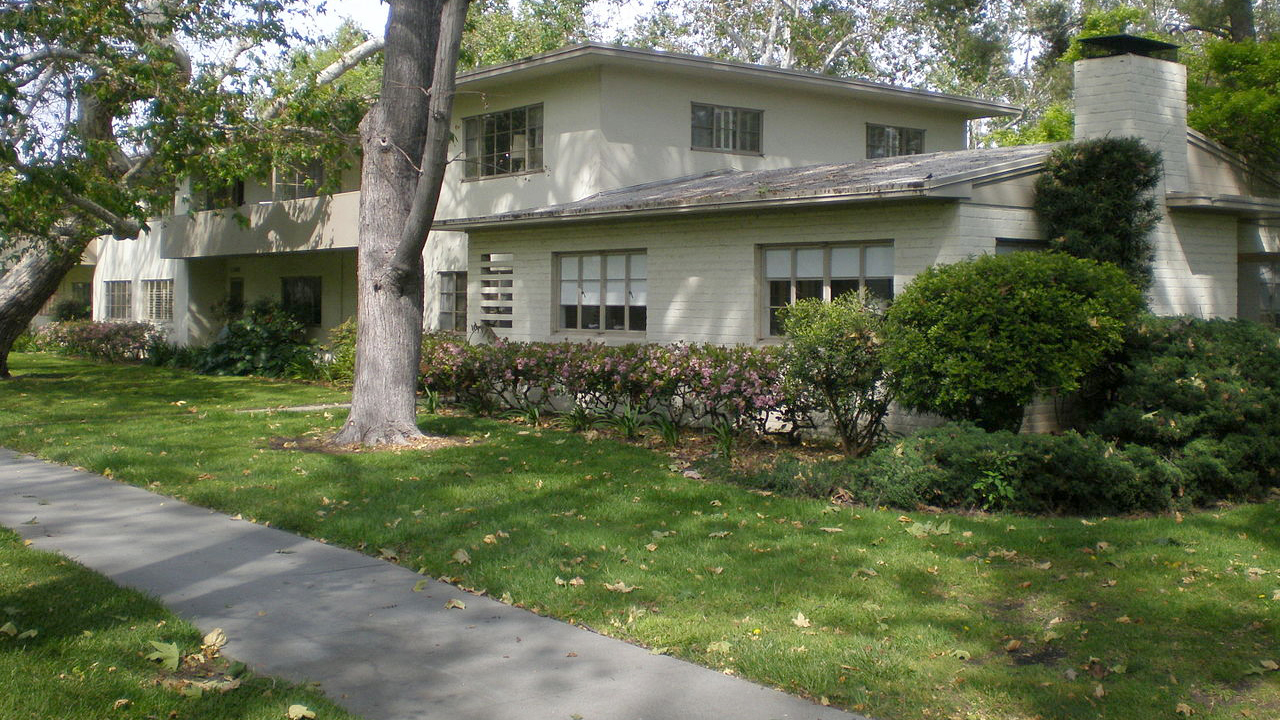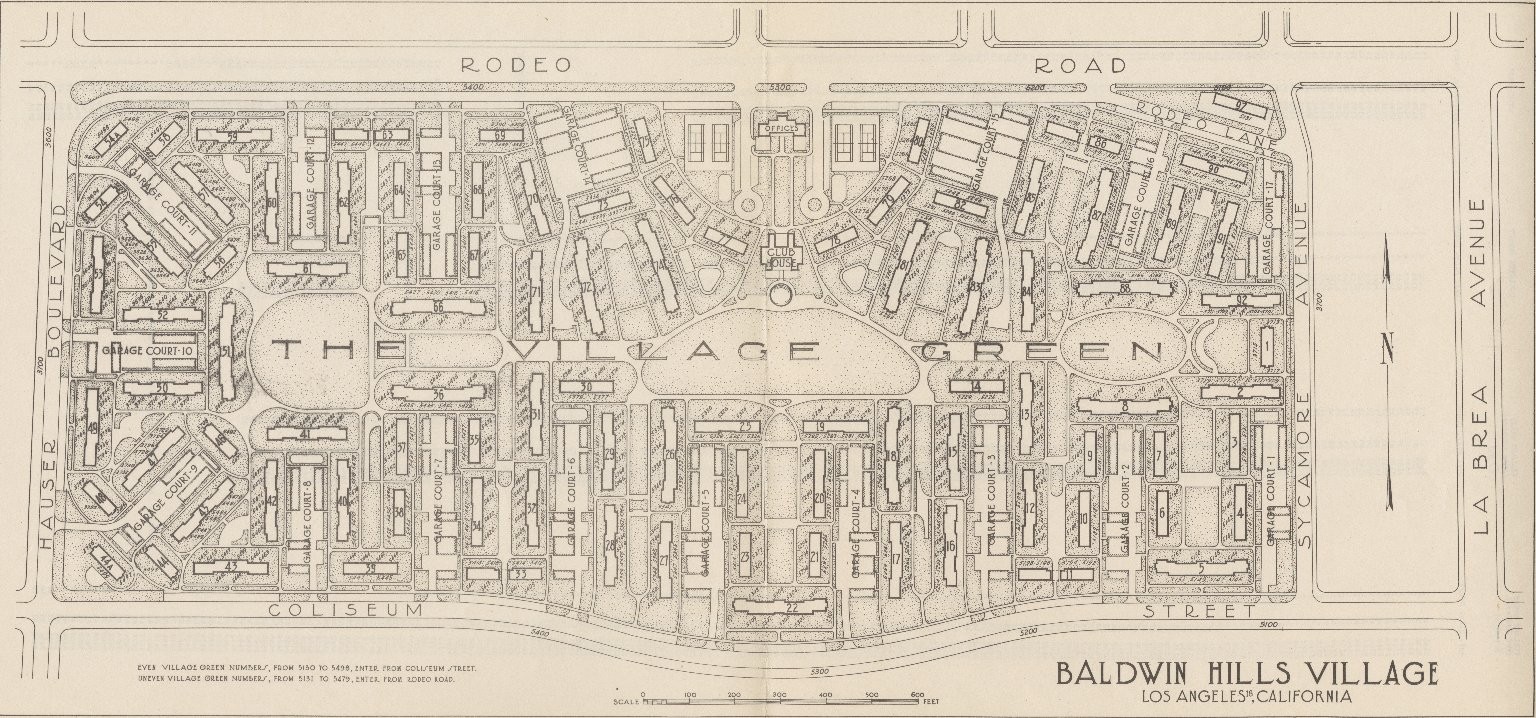
Village Green, Los Angeles
Los Angeles, United States
Village Green, orginally named Baldwin Hills Village, used the basic features of garden city planning: the use of the superblock, homes facing central greens and complete separation of pedestrian and automobile circulation.
| Garden City Type: | Mixed (housing association / municipality / other) |
| Country: | United States |
| City: | Los Angeles |
| Years of construction: |
1942 Completion
|
| Initiator/client: | E.G. "Lucky" Baldwin |
| Architect or related: |
Reginald D. Johnson Reginald Davis Johnson (1882 - 1952) was an American architect. Clarence S. Stein Clarence Samuel Stein (June 19, 1882 – February 7, 1975) was an American architect, city planner and writer. He attended Columbia University and the Ecôle des Beaux Arts in Paris. In 1919, Stein started his own practice in |
| Heritage status: | Yes |
| Explanation: | Village Green was declared a Los Angeles Historic-Cultural Monuments in 1977, listed on the National Register of Historic Places in 1993, and a National Historic Landmark historic district in 2001. It was also named one of the 100 most important architectural achievements in U.S. history. by The American Institute of Architects. |
| General condition of Garden City: | Good condition |
General description
Village Green was originally named Baldwin Hills Village. It is a neighbourhood at the foot of Baldwin Hills in the city of Los Angeles, California, boxed in between Obama Boulevard (before 2019: Rodeo Road), Hauser Boulevard, Coliseum Street and South Sycamore Avenue. The Modernist Garden city style complex, which encompassed 627 units, was designed in the late 1930s by architect Reginald D. Johnson, with consulting architect Clarence S. Stein and landscape architect Fred Barlow, Jr. Built by 1942, it is one of the oldest planned communities of its type in the United States.
Stein wrote that the purpose of Baldwin Hills Village was 'to demonstrate the practical possibilities of spacious homes and surroundings in an orderly community at low rentals,' and to use the basic features of garden city planning: the use of so-called superblocks, with homes facing central greens and complete separation of pedestrian and car circulation. Stein would later write that the community was the purest expression of these innovative principles.
 Map (Clarence Stein Papers / Cornell University Library, ca. 1942)
Map (Clarence Stein Papers / Cornell University Library, ca. 1942)
From 1972 to 1978, Baldwin Hills Village was redeveloped into condominiums and renamed The Village Green. The first unit was sold in 1973. The Village Green Owners Association and its elected Board of Directors assumed management of the completed complex in 1978 after the sale of the final unit.
Architecture / Urban planning
Village Green has 627 apartments grouped in buildings on a large landscaped site. The units seldom have more than two bedrooms, and tend to attract seniors and younger professionals as residents. Due to tenant restrictions that were widespread at the time, Baldwin Hills Village allowed only white, middle-class residents in its early years.
The designers looked to Garden City planning principles in its design and development, while also keeping an eye on the requirements of car-owners. Cars are relegated to garage courts, and common laundry areas are situated between buildings, which facilitate resident interaction and the use of common areas for recreation and play. Spacious units are cleverly situated in simple looking, but high-quality residential structures to make use of natural light and cross-ventilation, reducing the cost of construction and, later, utilities.
Residential buildings face central greens (the largest is about 800 feet wide), and many feature patio or balcony areas, blurring the line between outdoor and indoor living space. Only fourteen percent of the site is dedicated to residential use, leaving a lot of green space for patios, recreation areas, and site-specific landscaping.
Sources
- Website URL
- Website URL



